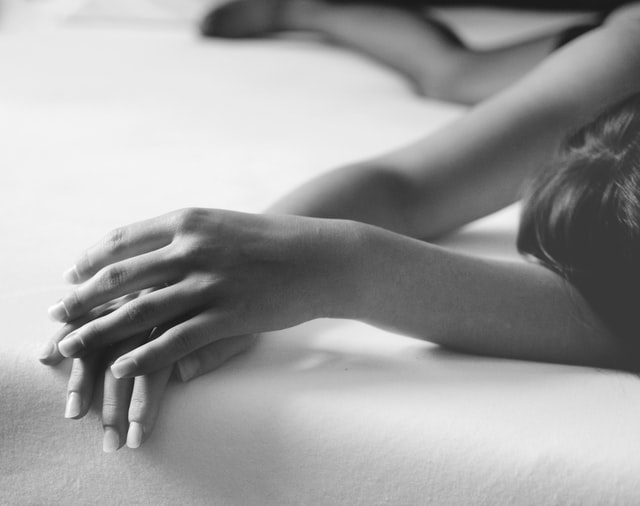Introduction-
The abnormal movements that our bodies produce when sleeping or attempting to sleep are referred to as sleep-related movement disorders. During sleep, abnormal movements and behaviours are part of a wider range of night occurrences that can happen during sleep, waking, or transitions into and out of sleep. They might vary from minor irritations to serious bodily injury.
These sleep events are typically divided into simple behaviours and complex behaviours. Single motions, repeated or periodic movements, rhythmical movements, and so forth are examples of simple behaviours. Sleep speech, sleepwalking, sleep terrors, dream enactment are examples of complex activities.

Sleep disturbances might make it challenging to obtain enough rest. They can also make sleep more difficult for anybody sharing a bed, especially if one of these conditions is present. Sleep Movement Disorder, if left untreated, can result in scattered or disturbed sleep, which can have negative implications during the day. It might result in tiredness and difficulty concentrating at school or work.
Let us talk about some common sleep-related movement disorders.
Common Sleep Movement Disorders-
- Sleep Bruxism – Sleep bruxism is the grinding of teeth while sleeping. Children, teenagers, and young adults are more likely than middle-aged and older individuals to grind their teeth when sleeping. Sleep-related bruxism is a movement problem in which a person clenches or grinds his or her teeth while sleeping.
Sleep bruxism on rare occasions may not be dangerous. Teeth grinding can cause moderate to severe dental damage if done regularly. It can also cause face discomfort and sleep disturbances.
- Restless Leg Syndrome – Restless leg syndrome (RLS) is a disorder in which a person’s limbs have powerful, often overpowering desires to move. RLS can affect other limbs or sections of the body in rare situations. When someone has RLS, they have an unpleasant sensation or a restless sensation in their legs while attempting to sleep.
Some people also have inexplicable pain. RLS may strike at any age, and it usually becomes worse as you get older. It can interfere with daily tasks by disrupting sleep.
- Periodic Limb Movement Disorder (PLMD)- Periodic limb movement disorder (PLMD), also known as Periodic Limb Movements Of Sleep. It is a condition in which the arms, legs, or feet move repeatedly during sleep. PLMD can interfere with sleep and interact with other sleep disorders such as restless legs syndrome and narcolepsy. This can be followed by excessive tiredness and significant daytime sleepiness. Its symptoms only appear during sleep, leaving the patient completely unaware of their motions.
- Rhythmic Movement Disorder (RMD) – Rhythmic movement disorder is a condition in which a person’s motions become repetitive and rhythmic when they are sleepy or drowsy. The head and neck are frequently used in these motions. There are three types of basic RMD movement like body rocking, headbanging, and head rolling. The RMD is most common in healthy babies and youngsters. Teenagers and adults with RMD are uncommon.
- Leg Cramps – Leg cramps include sudden and unpredictable muscular spasms that can last anywhere from seconds to minutes. Leg Cramps are unpleasant, uncontrollable, and normally only last a few minutes. These cramps are tight and persistent muscular contractions. It can sometimes affect the feet and thighs as well. These contractions can last anywhere from 30 seconds to 2 minutes, and even longer in certain cases. Soreness may occur after the muscular cramps have stopped.
- Hypnic Jerk – Involuntary muscular contractions that create abrupt and brief jerks when you’re trying to fall asleep are known as hypnic jerks. This occurs when a person switches from a wakeful to a sleeping condition. Simply defined, a hypnic jerk occurs when you fall asleep and feel as though you are falling from a skyscraper. It’s crucial to keep in mind that hypnic jerks are very prevalent.
Causes of Sleep-Related disorders-
It’s tough to say what causes these problems. A patient’s medical history might be the source of the problem. These problems might be caused by long-term medication or substance usage. This can also cause stress and anxiety. When someone suffers from one of these conditions, it is critical to get medical help right once.
Sleep movement disorder online courses-
To cure these diseases, the candidates should approach doctors. That’s why doctors need to be a specialist in sleep-related movement disorders. For this, the doctors can take up online courses to develop a basic understanding of the disorders. The following things you can learn in a sleep movement disorder course-
- Recognize and classify unusual movement patterns while sleeping.
- Select the most appropriate assessment technique.
- Finally, learn how to deal with abnormal sleep movements.
There are several websites that offer such courses. Some websites are sleep medicine institute, udemy, Coursera, and many more.
We wish that after completion of courses, the specialist can assist the patients and help them to get relief from these sleep-related movement disorders.